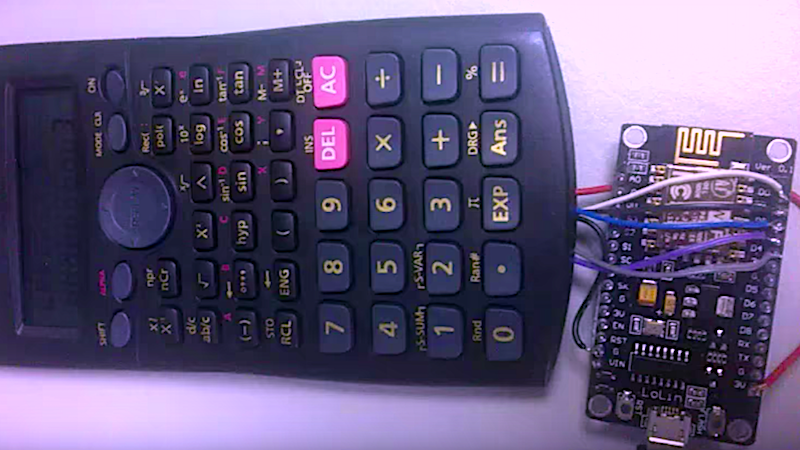Calculator hacks have been around for a while now and we have seen the most action around the Texas Instruments TI-83 and TI-84. When [johnkimdinh] found a way to add an ESP8266 to a scientific calculator (machine translation) and this time around it’s a Kenko FX-82M calculator which appears eerily similar to the Casio FX-82M.
In his video, [johnkimdinh] demonstrates his hack which has a web interface for transmitting numbers to the calculator. This is accomplished by accessing the keypad using the ESP8266 GPIOs and it is essentially the equivalent of typing remotely. The rest of the circuit remains intact so bit more work and the other functions should be available remotely as well.
Perhaps this hack is best suited as a dedicated display for outputting measurements and other data which requires some type of post-processing to be human readable. If the next iteration delivers the ability to read from the display we’ll really be getting somewhere. We envision such calculators being used as the future of education where the connectivity is used to retrieve an array of real time parameters for assignments. Add a few sensors into the mix and it could be the next big thing for STEM.
In the past, we have had calculators brought to life to do vector and matrix math and ESP8266s connected to TI-84 calculators. After all, everyone has calculators, they simply must be hacked!
















Cool Hack, I wonder if this could be upgraded a bit and connected to something like Wolfram Alpha and if so is there a similar open source alternative to Wolfram?
IoT Internet of Trigonometry ????
????????
I feel that this is also a great HaD calculator hack
http://hackaday.com/2016/08/10/fun-audio-waveform-generator-is-more-than-the-sum-of-its-parts/
1+11+11+111=134 ect…
“Add a few sensors into the mix and it could be the next big thing for STEM.”
No
I like the idea of using old gear as physical interfaces for these cheap powerful SOCs, lots of potential there.
Or you know… You can use a bunch of innocent looking IoT calculators so you can cheat on engineering/maths/physics exams.
If you get 100 on the test, they take away your calculator to make sure you aren’t cheating.
Well, the idea is to know when to stop :P
Anyway, the good old paper swap is less stealth, but a lot more effective.
There was a tie hen calculators were interfaced to microprocessors. Terribly slow, but probably faster than in software. Certainly faster than writing the software. Around the time there was an IC to give math to a CPU, but expensive. Though it was intended for then purpose, so interfacing easier. But it didn’t integrate the same way later math coprocessors did.
Michael
I wonder if you could just remove all/most of the internals, put a arduino+GPRS module or a ESP8266 if there is wifi available, connect with the wolfram aplha api, hack the display and introduce the world to the latest tech in exam cheating.
I don’t really understand how he’s controlling the keys. In the translation, it was talking about a relay but I’m not sure how you’d use a single relay to switch every key on a 3×8 keypad.